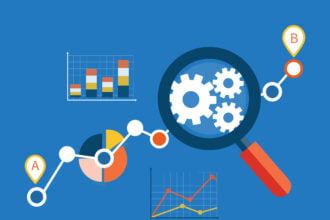There are far too many data warehouse development teams solely focused on loading data. They’ve completely lost sight of their success metrics.
Why have they fallen into this rut? Because they’re doing what they’ve always done. One of the challenges in data warehousing is that as time progresses the people on the data warehouse development team are often not the same people who launched the team. This erosion of experience has eroded the original vision and degraded the team’s effectiveness .
One client of mine actually bonused their data warehouse development team based on system usage and capacity. Was there a lot of data in the data warehouse? Yep. Were there multiple sandboxes, each with its own copy of data? Yep. Was this useful three years ago? Yep. Does any of this matter now? Nope. The original purpose of the data warehouse—indeed, the entire BI program—has been forgotten.
In the beginning the team understood how to help the business. They were measured on business impact. Success was based on new revenues and lower costs outside of IT. The team understood the evolution of the applications…
There are far too many data warehouse development teams solely focused on loading data. They’ve completely lost sight of their success metrics.
Why have they fallen into this rut? Because they’re doing what they’ve always done. One of the challenges in data warehousing is that as time progresses the people on the data warehouse development team are often not the same people who launched the team. This erosion of experience has eroded the original vision and degraded the team’s effectiveness .
One client of mine actually bonused their data warehouse development team based on system usage and capacity. Was there a lot of data in the data warehouse? Yep. Were there multiple sandboxes, each with its own copy of data? Yep. Was this useful three years ago? Yep. Does any of this matter now? Nope. The original purpose of the data warehouse—indeed, the entire BI program—has been forgotten.
In the beginning the team understood how to help the business. They were measured on business impact. Success was based on new revenues and lower costs outside of IT. The team understood the evolution of the applications and data to support BI was critical in continually delivering business value. There was an awareness of what was next. Success was based on responding to the new business need. Sometimes this meant reusing data with new reports, sometimes it meant new data, sometimes it was just adjusting a report. The focus was on aggressively responding to business change and the resulting business need.
How does your BI team support decision making? Does it still deliver value to business users? Maybe your company is like some of the companies that I’ve seen: the success of the data warehouse and the growth of its budget propelled it into being managed like an operational system. People have refocused their priorities to managing loads, monitoring jobs, and throwing the least-expensive, commodity skills at the program. So a few years after BI is introduced, the entire program has become populated with IT order-takers, watching and managing extracts, load jobs, and utilization levels.
Then an executive asks: “Why is this data warehouse costing us so much?”
You’ve built applications, you’ve delivered business value, and you’ve managed your budget. Good for you. But now you have to do more. IT’s definition of data warehouse success is you cutting your budget. Why? Because IT’s definition of success isn’t business value creation, it’s budget conformance.
Because BI isn’t focused on business operation automation, as with many operational systems, it can’t thrive in a maintenance-driven mode. In order to continue to support the business, BI must continually deliver new information and new functionality. Beware the IT organization that wants to migrate the data warehouse to an operational support model measured on budgets, not business value. This can jeopardize more than just your next platform upgrade, it can imperil the BI program itself. The tunnel-vision of Service Level Agreements, manpower estimates, and project plan maintenance aren’t doing you any favors. They can’t be done devoid of business drivers.
When there are new business needs, business users may try to enlist IT resources to support them. But they no longer see partners who will help realize their visions and deliver valuable analytics. They see a few low-cost, less experienced technicians monitoring system uptime and staring at the blinking lights.
photo by jurvetson via Flickr (Creative Commons License)








